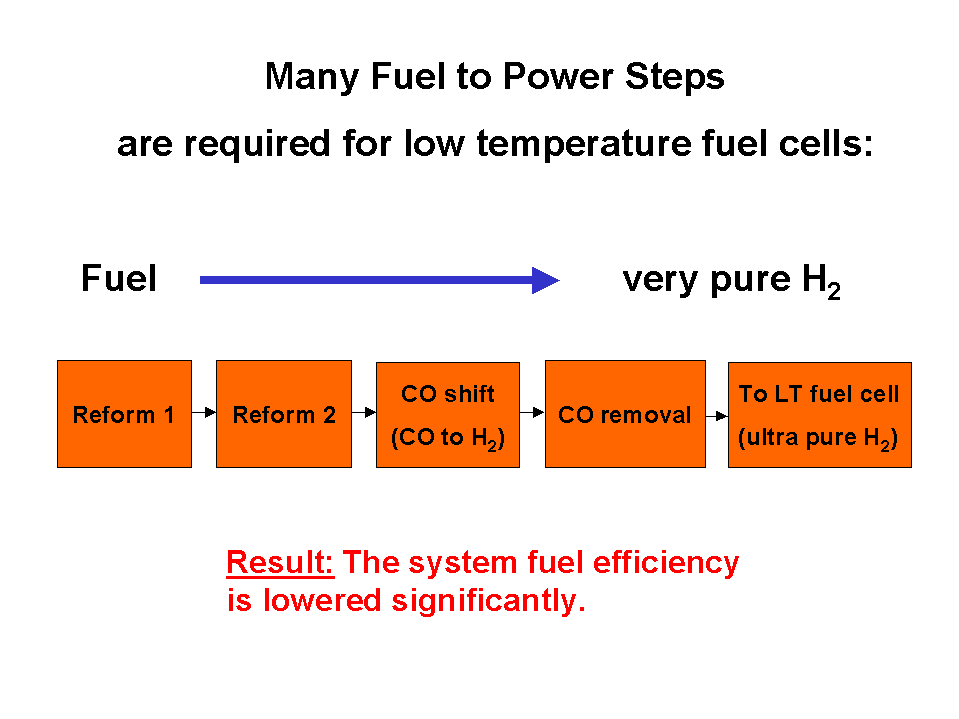SOFC
HELP Design
HELP Applications
Appendix
Fuel Cells in General
SOFC's in General
Appendix 1 - Fuel Cells in General

Fuel cells are devices which convert fossile fuel or hydrogen directly into electricity. They can be characterised by the following features:
- no moving parts ® quiet and no mechanical wear
- high electrical efficiency ® significant CO2 reduction per kWh
- extremely environmental friendly - zero emission
- low weight
- compact
For the near future fuel cells are seen as the logical way of continued use of fossile fuels both in a more efficient as in an environmental friendly way of electricity generation. In some types of fuel cells waste heat can also be used (co-generation) even more increasing fuel efficiency. For more general use a diversity of fuel cell types have been developed.
The types with the best chance for market introduction in the near future are:
- Solid Polymer Fuel Cell (SPFC) or Proton Exchange Membrane (PEM)
- Solid Oxide Fuel Cell (SOFC)
1. SPFC or PEM
This type is based on a special type of polymer membrane, serving as the electrolyte. Because of the low operating temperature platinum has to be used as a catalyst.
This fuel cell operates at temperatures well under 100 ° C and uses extremely purified hydrogen as a feed, due to the contaminant sensitivity of the platinum.
This fuel cell type is currently considered for use in automobiles which resulted in a enormous development effort and financial impulse.
De hydrogen feed can be stored in a gas tank as a gas or liquefied state. For some applications this is not a favourable option. For mobile applications, the purified hydrogen could also be produced on-board from conventional fuels using a type of reformer, followed by two CO shift reactors and a (selective) oxidative CO trace removal, see also the rather complex flow sheet:

Optimisation of the efficiency of this rather complex gas pre-treatment, the water management in the cell and the reduction of the material and total equipment costs are currently a great challenge for the development of the SPFC/PEM.
For more general information on fuel cells link to :
U.S. Department of Energy - Types of fuel cells
The fact that SOFC type fuel cells do not require such complex
fuel processing steps, but can operate under less strict conditions for the fuel feed, is seen as a major advantage for SOFC's.